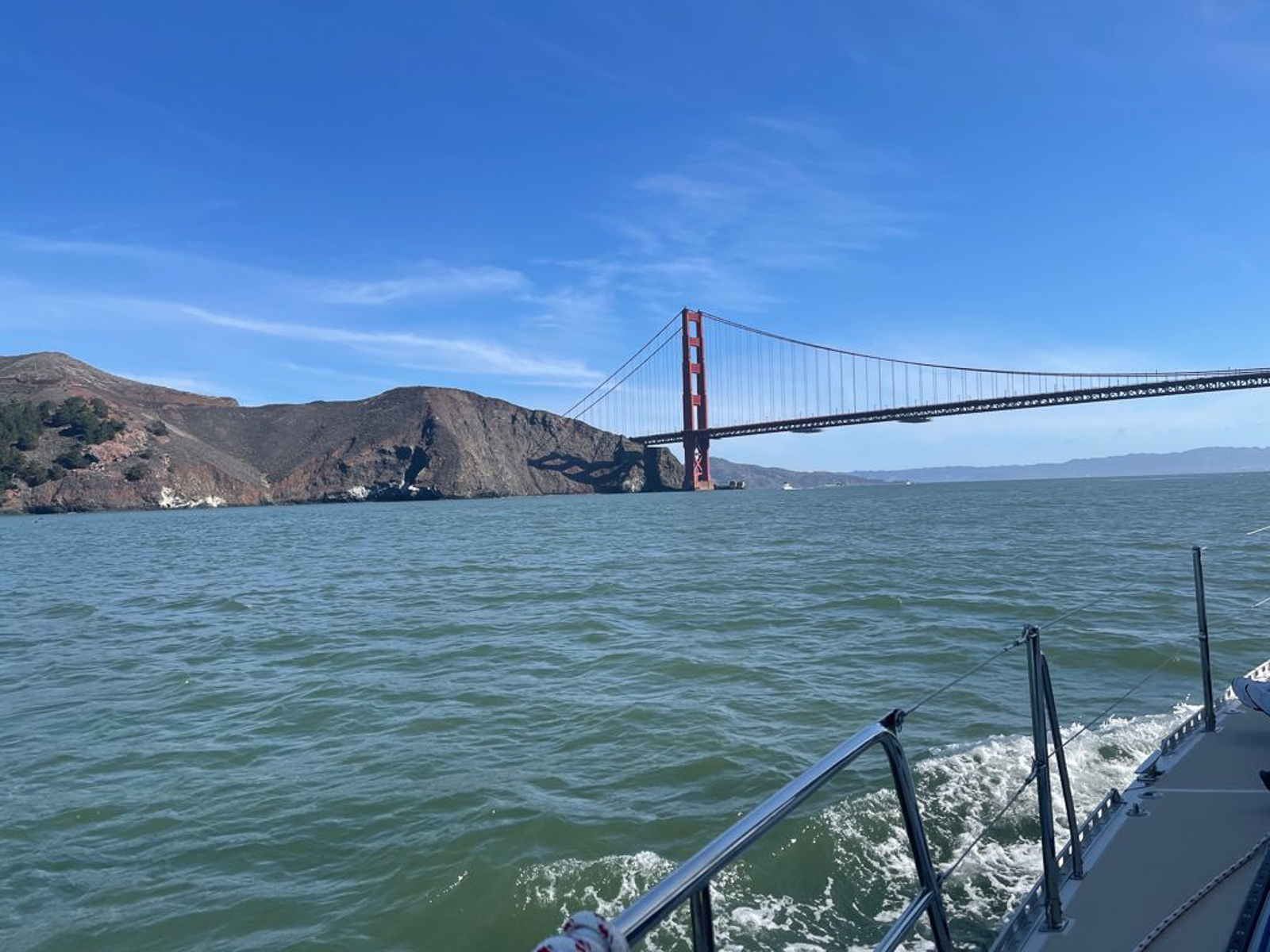
Looking through a weather window
After we celebrated, slept, and recovered from our first 2-night passage to Newport, the spirits got higher and we felt we are ready to go out and face the ocean again. But then we came to the startling realization of the main problem of our overall strategy.
We have decided early on that we are not ready for a single 6- to 7-days passage straight from Puget Sound to San Francisco. Many other Coho Ho Ho boats opted to do that, but our decision was to take shorter hops and stop in some ports along the way. That was mainly dictated by our experience or rather the lack of it. We wanted to play it safe and be able to avoid the worst weather if needed. As it turned out, the challenge was that we cannot just arrive at a port, take one or two days of rest and then go to sea again. That might be possible in other waters perhaps, but hard to do on that stretch of the Pacific coast. It is because one needs the right weather. The weather in the North Pacific at this time of the year is defined by the Pacific High – the high-pressure system that usually is parked well offshore and creates northerly winds along the coast. Sometimes those winds get very strong and create large waves that make it risky to enter and leave harbors. Remember that waves get steeper and break when it is shallow and that breaking waves are dangerous for small boats. On top of that many harbors are in estuaries. The rivers create so-called “bars” – shallow areas built up with sediment carried by the river which become dangerous when waves are higher. Then we have the capes – the pieces of land that stick out more into the ocean and tend to accelerate winds in their vicinity. There are two specific ones that need to be respected – Cape Blanco and Cape Mendocino. When the high pressure builds up it can create strong winds well offshore and closer in those winds will be even higher, accelerated by the interaction with land, and will create sea conditions that make it very hard to leave ports. In other words, once you enter a port, it may be quite some time before you have the right weather to exit it. The high pressure is sometimes interrupted by low-pressure systems that create southerly winds. We did not want those either, as we preferred to not go upwind. So we and many fellow boaters ended up waiting for a low-pressure system that creates an interruption in the high-wind-and-big-waves pattern from the high pressure, let it go through and leave just at the end when the high pressure starts building again but did not have a chance yet to intensify. As you may guess, that pattern does not happen on the exact day you think you are ready to leave. So our planned 2-day stay in Newport turned into 4 days.

Newport is an important port on the Oregon coast. It is a convenient place to stop as the river entrance, the bar crossing, is relatively easy compared to other harbors north and south of it. Fishing is a major industry in Newport and you will see many fishing boats entering and leaving and moving inside the harbor. As you enter the river you are greeted by a huge bridge. No need to worry about the mast height, as the clearance is 160 feet. The bridge connects the south side, where the marina is, to the north side, where is the main part of the town. On the south side, Newport Marina and RV Park is the place to stop. As you enter it, watch the depth, as it gets very shallow. The guest dock is a long linear dock located opposite of the fuel dock, and it is the first set of docks in the marina. It is Ok to pull into the guest dock if there is space and then go register at the marina office. There are a couple of restaurants around the marina, the most notable is the Roque Brewery – great beers and pub food. The best food we had in Newport was in a little crab shack about 10 minutes walk from the marina, on Highway 101. You cannot miss it – it has a huge “CRAB” sign, in red, displayed above it. It seemed always busy but had the freshest and tastiest tacos and fish & chips that we have tried on the US West Coast. The south side of town has all the regular shops and amenities – you can buy groceries and any other supplies. This is also where the main tourist attractions are – all conveniently located along the waterfront street. Towards the end of the boardwalk, you will also find Englund Marine – a well-stocked chandlery. The best way to get from the marina to town is by bus that departs once an hour from the marina and stops at various places. You can get the map, the bus schedule, and free tickets at the marina’s office.
We used the time in Newport to our best advantage – explored the town and what it had to offer. We happened to be in Newport during the Labor Day weekend. It seemed to be the weekend when all Oregon sport fishermen decided to go out and fish. Next to our marina was an RV Park and it got packed with RVs and small boats. Every morning there was a long line at the ramp to launch the boats, and every evening a long line at the fish cleaning station with everyone discussing the catch. It was fascinating for us to observe all this.
So after 4 days of waiting, we finally had a weather window to go. We departed in the early morning to go out of the river bar at the slack time. It was also a low tide, which made it somewhat tricky, as the Newport marina has a very shallow entrance. We navigated it with only inches of water to spare. Once further in the ocean, we had our first big encounter with whales – we were motoring and suddenly realized we are surrounded by a large pod of whales. There were about 20 or more of them. We slowed down to minimal speed and slowly made our way through them. The whales were just swimming around us, in all directions, crossing our bow, moving behind. Two of them followed us for about a mile and then gave up. It was a quite special experience.
We had enough of the good weather to go around Cape Blanco and arrive in Crescent City, CA but we could not go all the way around the next cape – Cape Mendocino. Crescent City has a well-built marina, but the town itself was a long walk from it and had not much to offer. After a day there we elected to move closer to Cape Mendocino – to Eureka. It took us a whole day motoring in super dense fog and no wind. We literally could not tell where the water ends and sky begins and we only knew where we are from our GPS and instruments. We entered the Eureka reiver channel with the help of the radar.

Eureka is an older town located several miles down the channels of Humboldt Bay. The entrance to the bay is over a bar and it is a tricker one than Newport. The currents in the entrance are strong and need to be accounted for. We were coming in on a building flood tide and the current was pushing us to the south side of the channel. The approach to the channel is at an angle and then takes a turn into it. The entrance has ranges set up to help with navigation. It is useful to call Coast Guard on Channel 16 to ask about the conditions at the entrance. After entering the bay and turning left towards Eureka the currents calm down and it is easy motoring to the town. There are two marinas – a public marina on the south side of the channel and a private one on Woodley Island across from the town. The public marina has reasonable docks and a very helpful harbormaster. It is about a mile of walk to town through some sketchy areas, but it is possible to get there on foot. There is an excellent co-op grocery store about a 10-minute walk from the marina and there are also numerous walking trails leading around the Humboldt Bay. From what we know about the private marina on Woodley Is, it is a nicer one, but the main disadvantage is that it is separated by a highway bridge from the town and unless you have a car it is quite hard to get to Eureka from it.
In Eureka, our relative luck in getting the right weather at the right time run out and we were forced to stay there for over a week. Luckily we had the company of four other cruising boats, some of those that we met in Newport and some new ones. That company really made a difference in keeping our spirits high and consulting on our observations of the weather. But the overall impression of our stay will always remain a dreadful one. It’s not that Eureka is a bad town, we’ve seen worse, it’s just that the combination of cold and foggy weather and the general emptiness of the town made it a somewhat spooky experience. The town must have seen better days. As you walk through it you can see old buildings, some with quite eclectic architecture. You will find here the Carson Mansion which is said to be an inspiration for a clock tower in Disneyland. That’s all nice to see, but the town has been lacking any life. There has been a lot of homeless people and not enough regular townsfolk living there. There have been restaurants and cafes but they stayed mostly empty. We did find a few nice places to eat and we took walks through town to explore as much as we could. We even went to Eureka’s Zoo – possibly the smallest zoo we have been to, and the first one that hosted raccoons in one of the displays. The highlight of the zoo was the Canopy Walk – a set of hanging bridges connecting a grove of sequoia trees growing inside the zoo.
The sequoias, or redwoods as they are called in this region, are the main attraction around Eureka. We rented a car on one of the days and drove through the Redwoods National Park and took a few hikes there. One led us through the old forest with many majestic trees. The other hike took us to the seashore where we enjoyed a few hours on a beautiful beach in full sun and no fog. That day trip was a highlight of our stay.
Finally, a day came to leave Eureka. We had our window, but it was a small one and we had to move fast to escape a coming low-pressure system with accompanying strong south winds. It was an exodus from the Eureka public marina – four boats leaving one after the other moving through the Humboldt Bay as on a parade. We accompanied each other for a little bit, but with different boat speeds, we started to move apart and soon lost sight of each other. We still could see each other on AIS and that was reassuring. We sailed for a little bit, trying the jib pole-out setup for the first time. But the wind died and we switched to motoring. So far our experience has been a lot like that – either too much wind or too little.
We motored through the day and night and made it around Cape Mendocino – our nemesis – with no problems. We made good enough speed to escape the worst of the low-pressure system, just ended up with 10 to 15 knots of wind on the nose that we had to motor against. It was tiresome but not hard. Our friends who left Eureka with us got caught up in stronger winds further north from us and had to slow down considerably. We made good progress but it was clear that we will not arrive in San Francisco before the night, so we pulled into Drakes Bay and anchored out. It is a huge bay, seemingly open to the sea, but somehow calm and protected. We had a peaceful night and well-needed rest.

The next morning we lifted the anchor with the sunrise and went towards San Franciso Bay. It was a glorious morning. All the rain and clouds from the prior day moved away and we had a clear blue sky and a beautiful sunrise. It is as if nature understood how tired we were of all the foggy, cold, and overall miserable weather we had all the prior weeks. We were all very excited to cross under the Golden Gate Bridge, in a full view of it. That’s a moment many sailors cherish and it is one of those moments we will remember for the rest of our lives. It just felt soooo good to get to this point, knowing that it will get easier from here.
As we pulled into the San Fransisco Bay it was a shock to see all the traffic – ferries, tugs, big ships – and also all small and bigger sailboats just enjoying their morning sail on a Sunday. People dressed in t-shirts, enjoying the sunshine and a nice breeze looking strangely at us, still bundled up in foul-weather clothes. After seeing only fishing boats and occasional sailboats for weeks, this was a sight to behold. Later we learned that not every day is like that in the Bay and it actually gets quite cold, but we happened to arrive on the warmest day in September. It was a perfect welcome for us.
We pulled in to Schoonmaker Point Marina in Sausalito and celebrated. The first big jump in our trip was completed.
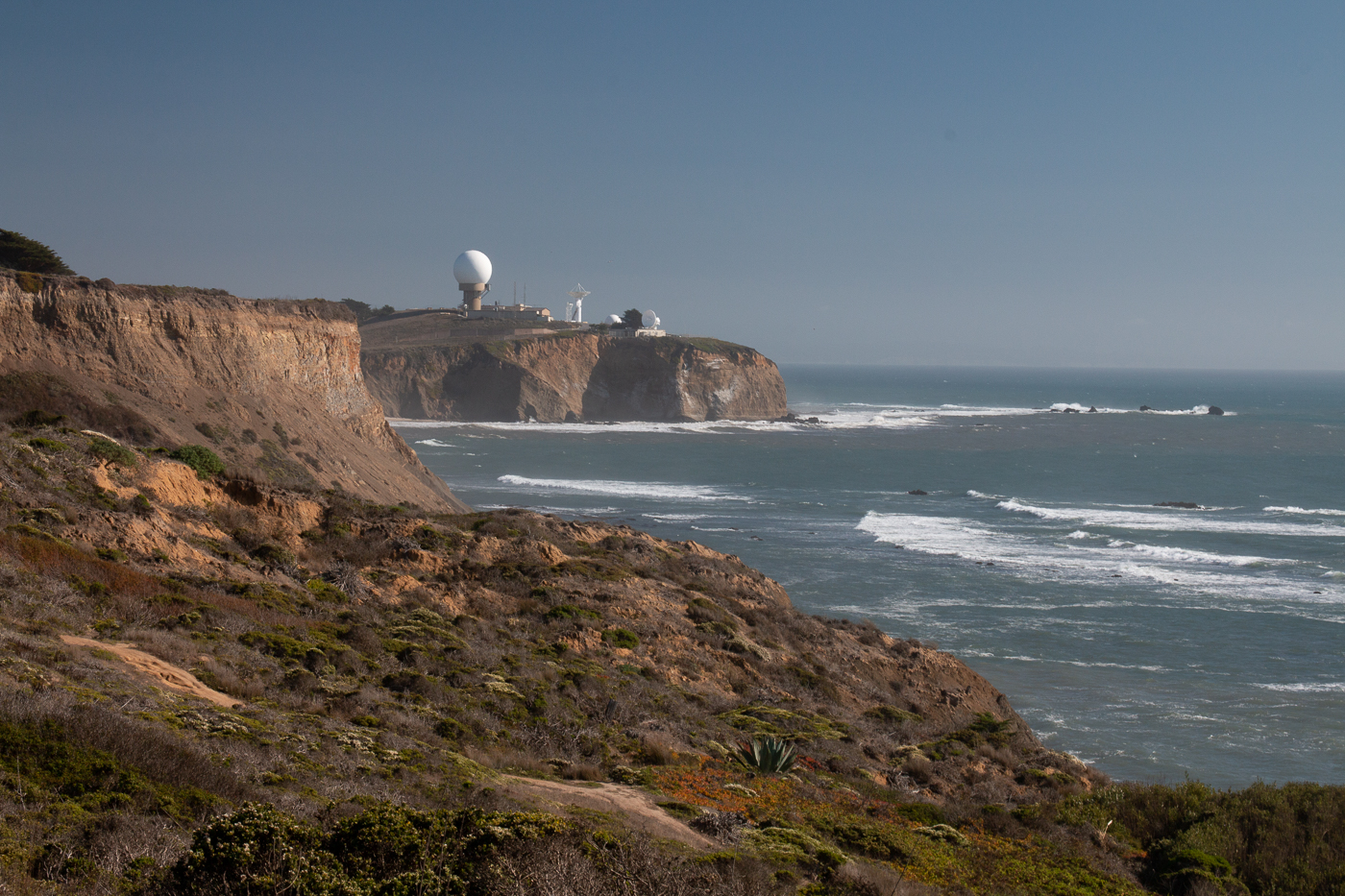
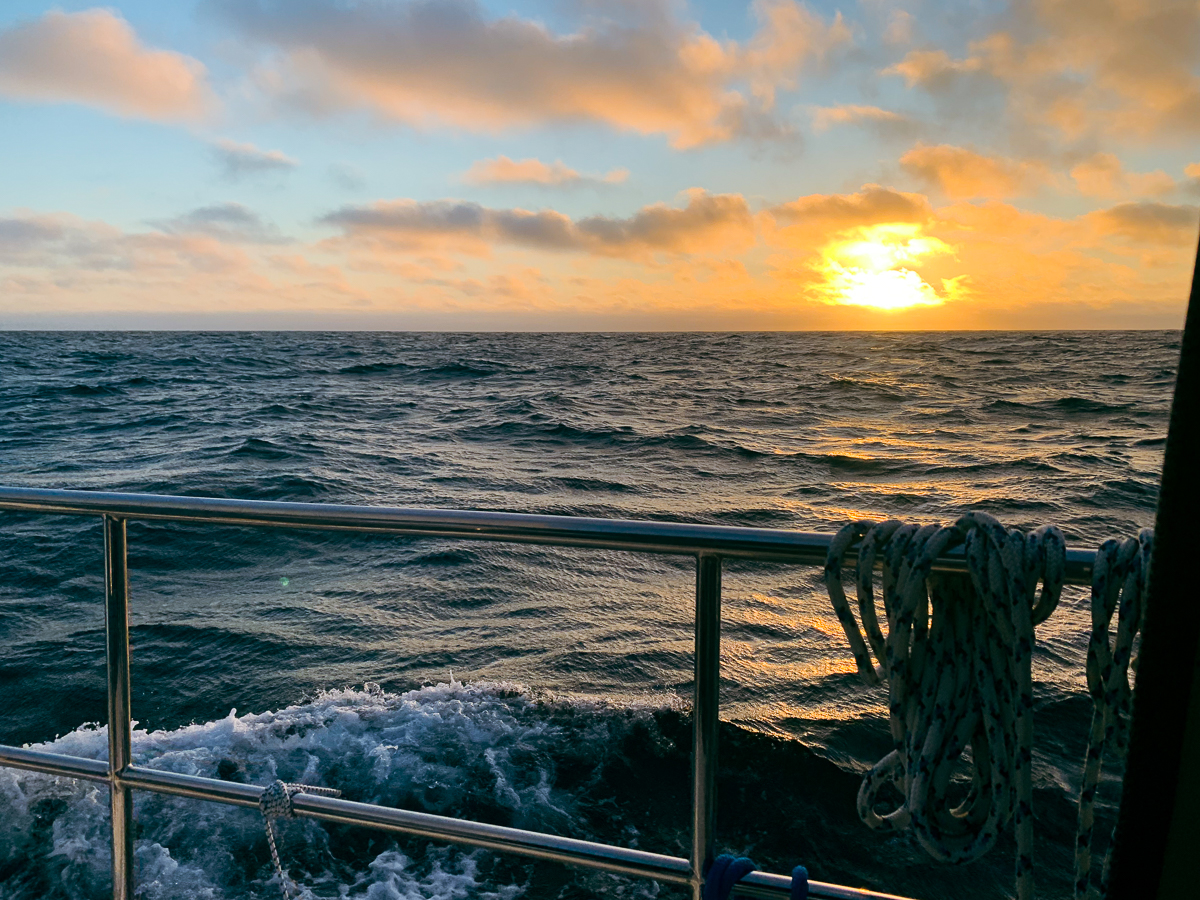




















































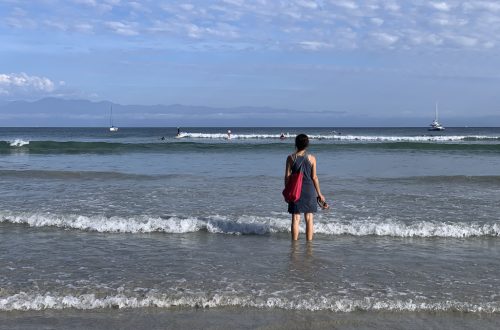
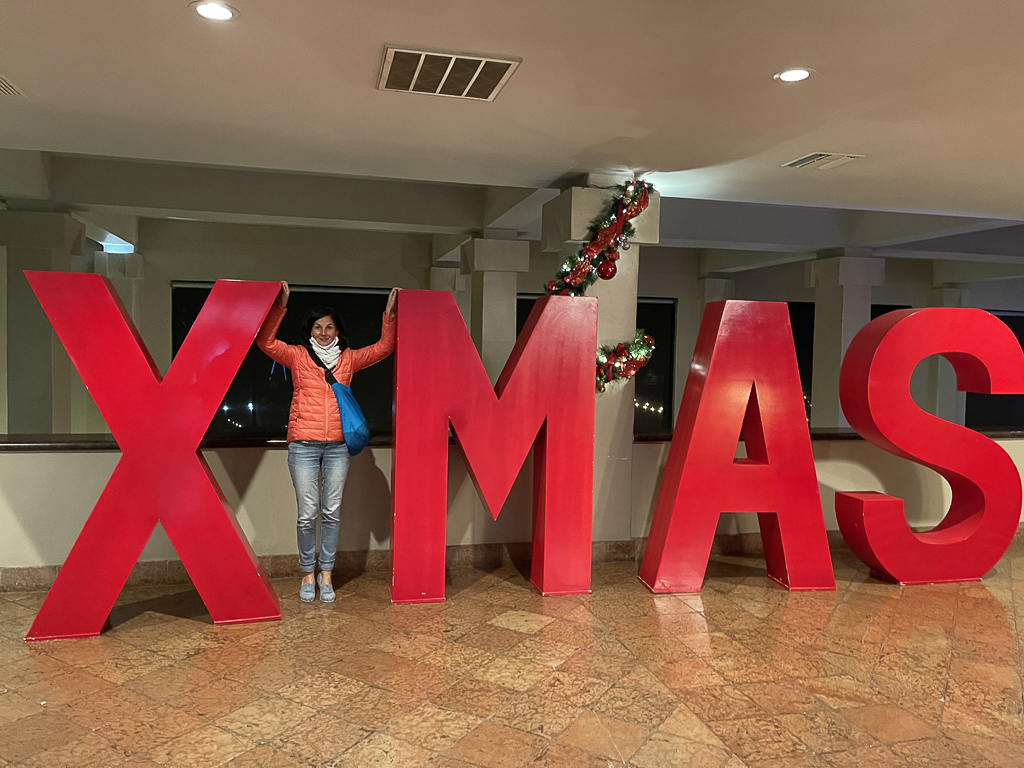
One Comment
Pingback: